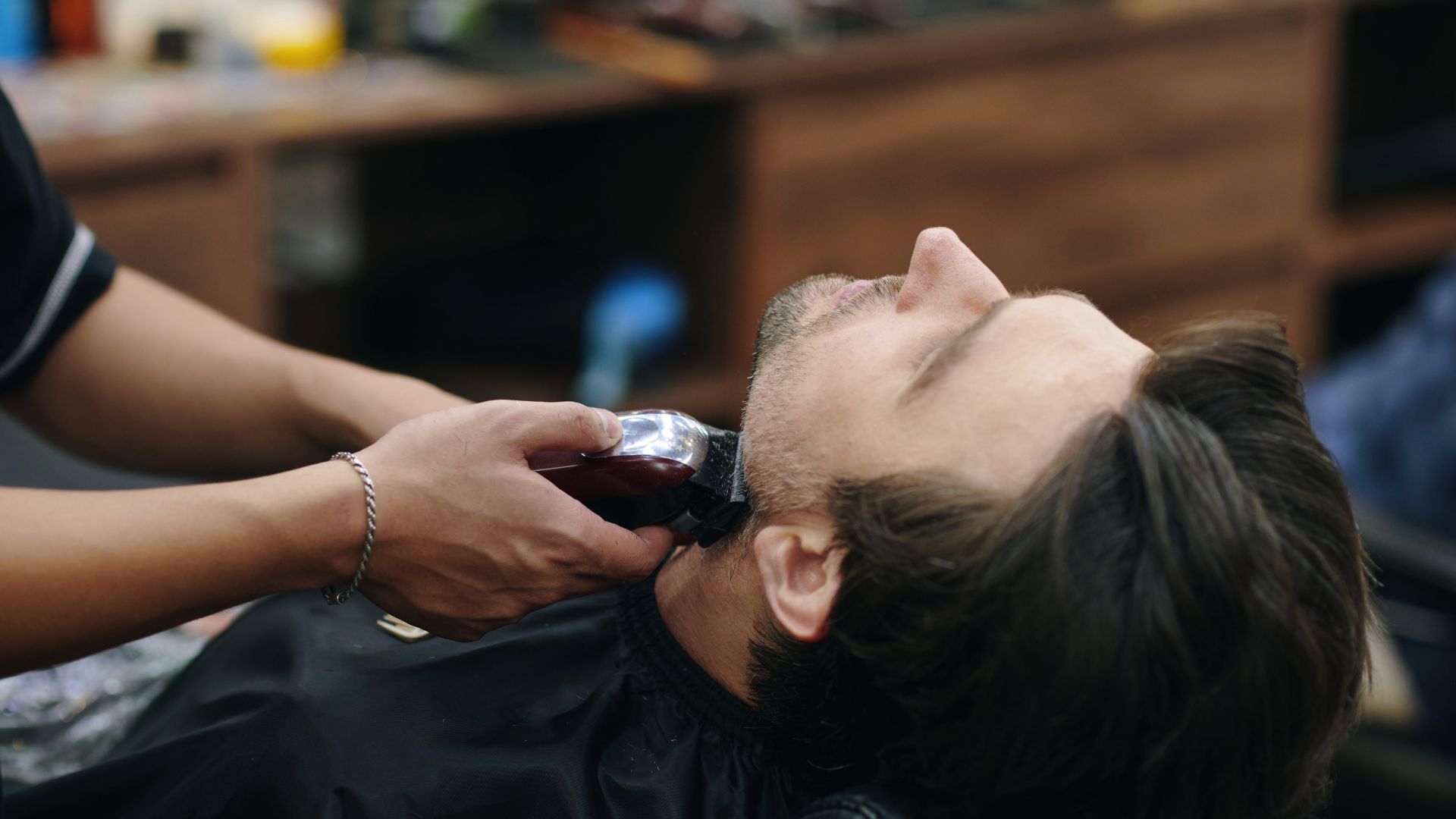A clean, sharp shave is a cornerstone of a professional appearance. It conveys attention to detail and discipline. Moving beyond basic shaving can transform a daily chore into a refined ritual, resulting in smoother skin and a more polished look. The following ten techniques are used by professionals to ensure a superior shave.
1. The Power of Pre-Shave Preparation
A perfect shave doesn’t start with the blade — it begins with preparation. Proper pre-shave preparation plays a crucial role in achieving a clean, irritation-free shave. The first and most important step is washing your face with a gentle, warm cleanser. This step does more than remove dirt and oil; it hydrates the skin and softens the beard, making it more receptive to the blade. The temperature of the water is key — warm water helps to open the pores while softening the facial hair, which reduces resistance during shaving.
After cleansing, the application of a pre-shave oil takes preparation to the next level. This specialized oil is designed to condition facial hair and create a protective layer on the skin. Not only does it reduce friction between the razor and your skin, but it also helps the blade glide effortlessly over tougher areas. Pre-shave oils often contain nourishing ingredients, such as jojoba or argan oil, which help to calm the skin and prevent irritation. This is particularly beneficial if you frequently deal with razor burn or sensitivity.
It’s also essential to allow the pre-shave oil a moment to sink into the skin. Many professionals advise taking a few minutes to massage it in using soft, upward motions to boost circulation and ensure even distribution. By laying the groundwork with proper pre-shave preparation, you greatly enhance the effectiveness of your shave, ensuring a smoother, closer, and more comfortable experience.
2. Seeking Advice from a Barbershop
When it comes to perfecting your shave, consulting with a professional barber can provide invaluable insight. For individuals routinely dealing with common shaving problems like razor burn, ingrown hairs, or uneven results, a visit to a reputable barbershop offers tailored solutions. A Barbershop in New York, especially one known for its expertise and attention to detail, brings a wealth of knowledge to the table. Their years of experience with diverse skin and beard types allow them to evaluate your unique needs and craft a personalized shaving routine.
During your consultation, a barber can identify factors you may not have considered, such as your skin sensitivity, hair growth patterns, and even environmental influences that could affect your routine. They can recommend high-quality products tailored to your specific requirements, from pre-shave oils and creams to razor types and aftershaves. Many barbers also provide shaving demonstrations, teaching you proper techniques like mastering the grain of your beard or adjusting your angle to prevent nicks and cuts.
Most importantly, barbershops often offer straight-razor shaves, which not only provide the cleanest results but also allow you to observe a professional in action. Watching how a trained hand wields a blade with precision can inspire confidence and give you a clear understanding of how to perform your at-home routine properly. Seeking guidance from a professional not only elevates your shaving game but transforms it from a mundane task into a refined, self-care ritual.
3. Mastering Lather and Brush Work
The shaving brush is one of the most underrated tools in the pursuit of the perfect shave. For quality results, investing in a brush made from badger hair, boar bristles, or synthetic fibers is highly recommended. The brush serves multiple functions—it lifts hairs from the skin for a cleaner cut, exfoliates gently to remove dead skin cells, and distributes shaving cream or soap evenly over your face. Mastering the skill of lather and brush work is critical in ensuring a smooth and painless shave.
The first step is choosing the right shaving cream or soap. Look for a product that builds a luxurious lather and provides ample hydration. To begin, soak the shaving brush in warm water to soften the bristles. This step is essential to retaining enough moisture to form a creamy lather. Once the brush is adequately soaked, lightly shake off the excess water and use the brush to load the shaving cream or soap. You can do this in a shaving bowl or directly on your palm.
Using the loaded brush, apply the lather to your face in circular motions. This technique not only creates a full-bodied lather but also helps to lift and separate the hairs for better blade access. Spend time on this process to ensure the beard is evenly coated and softened. If the lather looks slightly dry, add a splash of warm water to your brush and continue working it in until a smooth, whipped cream-like consistency is achieved. The ideal lather should be rich, creamy, and capable of holding moisture against the skin. This hydration prevents the razor from pulling or dragging on the hairs, making for an effortless shave.
The benefits of a good lather extend beyond the shave itself. By properly preparing the hair and skin, you reduce the risk of post-shave irritation and leave the face feeling remarkably refreshed. This attention to detail transforms shaving into an art form, ensuring a polished and professional look every time.
4. The Enduring Wisdom of Traditional Barbershops
There is a reason certain shaving methods rooted in tradition have endured for generations, and traditional barbershops are a testament to this time-honored wisdom. One of the most iconic techniques employed by professional barbers is the hot towel treatment, a practice that not only speaks to the ritualistic nature of grooming but also to its practical effectiveness. This method is simple yet transformative. By placing a warm, damp towel on the face for about a minute before applying lather, the beard hair becomes notably softened, allowing for a smoother shave. The moist heat opens up the pores, which relaxes the skin and primes it for blade contact, ensuring reduced drag and a dramatically more comfortable experience.
The appeal of this ritual lies in its accessibility—it’s a technique that can be easily replicated at home. Using a small, clean towel soaked in warm water, individuals can create a miniature spa-like experience in their own bathroom. But beyond the immediate benefits of softening the facial hair and improving hydration, the hot towel treatment encourages mindfulness. It instills a sense of preparation and enhances the overall patience needed for an effective shave. When combined with high-quality shaving products, this step guarantees a closer shave with minimal irritation while elevating the grooming process into something of an art.
5. Perfecting Blade Angle and Pressure
Mastering the fundamentals of blade angle and pressure is essential for anyone looking for a truly flawless shave. One of the most common errors people make involves applying excessive pressure while shaving. This mistake often leads to unnecessary abrasions, razor burn, or nicks. The good news is that perfecting this aspect of shaving is straightforward with proper guidance. The golden rule is to allow the weight of the razor to do the majority of the work. Heavy pressure is not needed; instead, a gentle touch combined with the right technique ensures an efficient, irritation-free shave.
The ideal angle for shaving exists at approximately 30 degrees between the blade and the skin. Maintaining this angle allows the razor to glide smoothly and cut hair efficiently, rather than scraping against the skin. Finding and keeping this angle may require some practice, especially for those making the switch to safety razors or straight razors, but it is a skill worth mastering. Short, deliberate strokes are another critical component. Long, sweeping motions often create inconsistencies in pressure and can lead to cuts. By focusing on controlled, concise movements and using a razor with a properly maintained sharp blade, you not only achieve a cleaner result but also protect the integrity of the skin. Perfecting these details leads to a professional-grade shave at home, helping to build confidence in your overall grooming routine.
6. How Modern Hair Trends Influence Grooming
Facial hair styles and grooming techniques are continuously evolving, reflecting dynamic shifts in personal styling preferences and cultural trends. Just as modern haircuts and hairstyles adapt with fashion cycles, the art of shaving has likewise seen significant changes tailored to more contemporary looks. These hair trends impact how individuals approach shaving and beard maintenance, incorporating certain methodologies for a polished and adaptable appearance.
One innovative concept that merges tradition with modern sensibilities is “skin streaming.” This technique places emphasis on shaving with the grain during the first pass. Shaving in the direction of hair growth reduces the likelihood of irritation, razor bumps, and ingrown hairs by minimizing mechanical conflict between the blade and the skin. For those seeking an exceptionally close finish, a second gentle pass across the grain may be performed, as it further refines the results. However, many experts caution against shaving directly against the grain, as this significantly increases the risk of damaging the skin’s surface and creating discomfort.
Furthermore, advancements in grooming technology and products have empowered individuals to adhere to these trends with greater ease. For instance, adjustable razors now allow users to customize blade aggressiveness according to their specific hair type and skin sensitivity. Similarly, specialized pre-shave oils and post-shave balms cater to a variety of preferences, providing tailored solutions for hydration, soothing inflamed skin, or enhancing overall skin texture. Keeping pace with these evolving techniques allows modern grooming enthusiasts to reconcile timeless shaving wisdom with cutting-edge innovation, ensuring their style remains as precise and sharp as the tools they use.
7. The Critical Role of Post-Shave Care
What happens after the shave is just as critical as the shave itself, making post-shave care an indispensable part of a successful grooming regimen. Your skin is most vulnerable immediately following a shave, as the process removes the outermost layer of skin, leaving it exposed and susceptible to irritation or dryness. To begin, always rinse your face with cold water right after shaving. The cold water helps to close the pores, reducing the risk of infection and sealing your skin to prevent dirt and bacteria from entering. This step alone can significantly minimize inflammation and redness.
The next, and perhaps most crucial, step is applying an alcohol-free aftershave balm or lotion. Unlike traditional alcohol-based aftershaves, which can be harsh and drying, alcohol-free products are formulated to hydrate and soothe the skin. They contain nourishing ingredients—such as aloe vera, chamomile, or glycerin—that calm irritation, bring relief to sensitive areas, and replenish the moisture stripped away during shaving. For those prone to razor burn or bumps, selecting an aftershave product infused with natural anti-inflammatory agents can be particularly effective. These products not only restore the skin but also create a gentle protective barrier, shielding it from environmental aggressors throughout the day.
Post-shave care is also an excellent opportunity to incorporate targeted skincare treatments into your routine. For instance, men with dry skin can opt for a heavy-duty balm rich in emollients, while those with oily or acne-prone skin might benefit from lighter, oil-free lotions fortified with salicylic acid or green tea extract to balance sebum production. Think of post-shave care as a personalized ritual, tailor-made to meet your skin’s unique needs. By making this step a priority, you ensure your skin remains healthy, smooth, and irritation-free long after the razor is put away.
8. Consulting with a Professional Barber
For anyone seeking to elevate their shaving routine to an expert-level experience, consulting with a professional barber offers unparalleled value. A seasoned barber in New York is not just a grooming specialist—they are artisans of the shaving craft, equipped with years of knowledge and hands-on expertise. Booking a one-on-one session with such a professional can provide you with invaluable insights into perfecting your technique and understanding the nuances of your own facial hair.
During a personalized consultation, a professional barber can demonstrate the proper way to hold a razor to ensure maximum control and minimal risk of cuts. They may also meticulously map out the growth patterns of your beard, helping you identify the areas where hair grows at different angles or lies flat against the skin. This mapping is essential for achieving a smoother, closer shave and reducing the likelihood of ingrown hairs. Personal instruction also includes guidance on the ideal pressure to apply, significantly diminishing the chances of razor burn or nicks.
Furthermore, a professional barber can recommend products suited to your skin type and personal preferences, from pre-shave oils to aftershave balms. Their recommendations are often specific and based on first-hand experience, ensuring you avoid trial-and-error frustration with generic products. Beyond technique and products, the session can also be a learning experience in the art of maintaining your tools. With these expert tips, the routine shaving process transforms into a luxurious ritual that not only delivers stunning results but also gives you the confidence to master your grooming with precision and skill.
9. Maintaining Your Tools
A superior shave begins and ends with well-maintained tools, and caring for your razor is fundamental to achieving professional-quality results. A dull blade is the worst enemy of a good shave. It requires more pressure to cut through hair, which not only increases the risk of cuts and nicks but also paves the way for skin irritation and razor burn. To avoid this, safety or cartridge razor blades should be replaced after approximately five to seven shaves, depending on the coarseness of your facial hair and how frequently you shave. Waiting too long to change blades can compromise the sharpness and cleanliness of your razor, leading to subpar results.
For those who use a straight razor, care and maintenance are even more crucial. Regular honing—typically performed with a whetstone—ensures the edge of the blade remains sharp and effective. This process should be supplemented with frequent stropping, which realigns the razor’s edge and helps maintain its sharpness between uses. Properly cared-for straight razors can last for years, or even decades, making this maintenance investment both essential and rewarding.
Beyond sharpness, hygiene plays a vital role in tool maintenance. After each use, thoroughly rinse your razor under running water to remove all traces of hair, lather, and debris. Once clean, pat the razor dry with a soft cloth to prevent rust or buildup—particularly important for straight razors, which are often made from high-carbon steel. For added bacterial protection, an occasional soak in a disinfectant solution or rubbing alcohol ensures your razor remains sanitary and safe for every use.
By prioritizing consistent blade replacement, regular cleaning, and proper storage, you add longevity to your shaving tools and guarantee they work optimally every time. Maintaining your tools is not just about preserving their functionality; it’s about creating a seamless shaving experience that leaves your skin smooth, comfortable, and flawless after each use.
10. Listening to Your Skin
Finally, the most advanced technique for a flawless shave is understanding and responding to your skin’s unique needs. Skin types vary greatly, and what works for one person may not suit another. Some skin types can comfortably handle a daily shave without issue, while others might benefit from taking a day or two off to allow the skin to recover and avoid irritation. Pay close attention to how your skin reacts to shaving products, techniques, and frequency. For instance, if you notice redness or increased sensitivity after shaving, it may be a sign to adjust your approach—whether that means trying a gentler blade, using a hydrating shaving cream, or shaving less frequently.
Understanding your skin also means recognizing environmental and seasonal factors that could affect it. Dry climates or colder weather can lead to dryness, making it essential to incorporate additional moisturizing steps into your routine. Conversely, humid conditions might necessitate lighter, non-comedogenic products to prevent clogged pores. By observing these minute details, you can tailor your shaving routine to work harmoniously with your skin, preventing irritation and fostering a healthy complexion.
Conclusion
Achieving a flawless, executive-ready shave is not just about the actual act of shaving—it’s an art form that combines knowledge, preparation, and attentiveness. By implementing these techniques, from thoroughly prepping your skin to refining your aftercare, you can transform an ordinary grooming session into a luxurious experience. Each step, from proper blade care to understanding your skin’s needs, contributes to not only a closer and smoother shave but one that leaves you feeling confident and refreshed.
Committing to such a detailed and personalized shaving routine sends a powerful message. It showcases care for both your appearance and your well-being, ensuring that each shave reflects a polished, professional image. When done right, a thoughtful shaving regimen becomes a daily ritual of self-care, benefiting both your skin and your personal confidence with every stroke of the blade.


